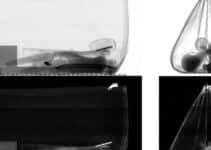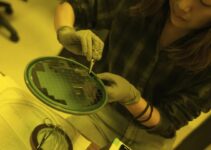Quantum computers hold immense potential for accelerating breakthroughs in critical fields such as human health, drug discovery, and artificial intelligence. By operating millions of times faster than even the most powerful supercomputers, a network of quantum computers could revolutionize these discoveries even faster. However, the key challenge lies in reliably connecting billions of quantum bits, or qubits, with atomic precision.
The task of connecting qubits has long puzzled the research community, with current methods relying on high-temperature processes that result in random qubit formation. As a result, it is difficult to pinpoint the exact location of qubits within a material, posing a significant barrier to achieving a functioning quantum computer.
Now, a research team at Lawrence Berkeley National Laboratory has made a groundbreaking discovery. They have successfully demonstrated the ability to create and “annihilate” qubits on demand with unprecedented precision by doping silicon with hydrogen using a femtosecond laser.
This achievement paves the way for quantum computers to utilize programmable optical qubits or “spin-photon qubits” to connect quantum nodes across a remote network. It could also advance a quantum internet that is not only more secure but could also transmit more data than current optical-fiber information technologies.
“This could carve out a potential new pathway for industry to overcome challenges in qubit fabrication and quality control,” said principal investigator Thomas Schenkel, senior scientist, Accelerator Technology & Applied Physics Division.
By using a gas environment, the new method forms programmable defects called “color centers” in silicon. These color centers have the potential to become specialized telecommunications qubits or “spin photon qubits.”

The method also involves employing an ultrafast femtosecond laser to precisely anneal silicon, allowing the qubits to form with accuracy. The femtosecond laser delivers incredibly brief pulses of energy within a quadrillionth of a second to a targeted area the size of a speck of dust.
Spin photon qubits have the capability to emit photons that carry information encoded in electron spin over long distances, making them ideal for supporting a secure quantum network. Qubits are the fundamental units of a quantum information system, encoding data in three different states: 1, 0, or a superposition that encompasses all possible values between 1 and 0.
Using a near-infrared detector, the team characterized the color centers and discovered a quantum emitter known as the Ci center. This center has a simple structure, stability at room temperature, and promising spin properties, making it an intriguing candidate for spin photon qubits that emit photons in the telecom band.
The researchers found that processing silicon with a low femtosecond laser intensity in the presence of hydrogen can create the Ci color centers. They also observed that increasing the laser intensity enhances the mobility of hydrogen, passivating undesirable color centers without causing damage to the silicon lattice.
Additionally, theoretical analysis by Liang Tan, a staff scientist at Berkeley Lab’s Molecular Foundry, confirmed that the presence of hydrogen significantly boosts the brightness of the Ci color center, aligning with their laboratory experiments.
“The femtosecond laser pulses can kick out hydrogen atoms or bring them back, allowing the programmable formation of desired optical qubits in precise locations,” Jhuria said.
The team intends to utilize the method to incorporate optical qubits into quantum devices such as reflective cavities and waveguides and to identify new spin-photon qubit candidates with properties tailored for specific applications.
“Now that we can reliably make color centers, we want to get different qubits to talk to each other – which is an embodiment of quantum entanglement – and see which ones perform the best. This is just the beginning,” said Jhuria.
“The ability to form qubits at programmable locations in a material like silicon that is available at scale is an exciting step towards practical quantum networking and computing,” said Cameron Geddes, Director of the ATAP Division.
Journal reference:
- K. Jhuria, V. Ivanov, D. Polley, Y. Zhiyenbayev, W. Liu, A. Persaud, W. Redjem, W. Qarony, P. Parajuli, Q. Ji, A. J. Gonsalves, J. Bokor, L. Z. Tan, B. Kanté & T. Schenkel. Programmable quantum emitter formation in silicon. Nature Communications, 2024; DOI: 10.1038/s41467-024-48714-2


